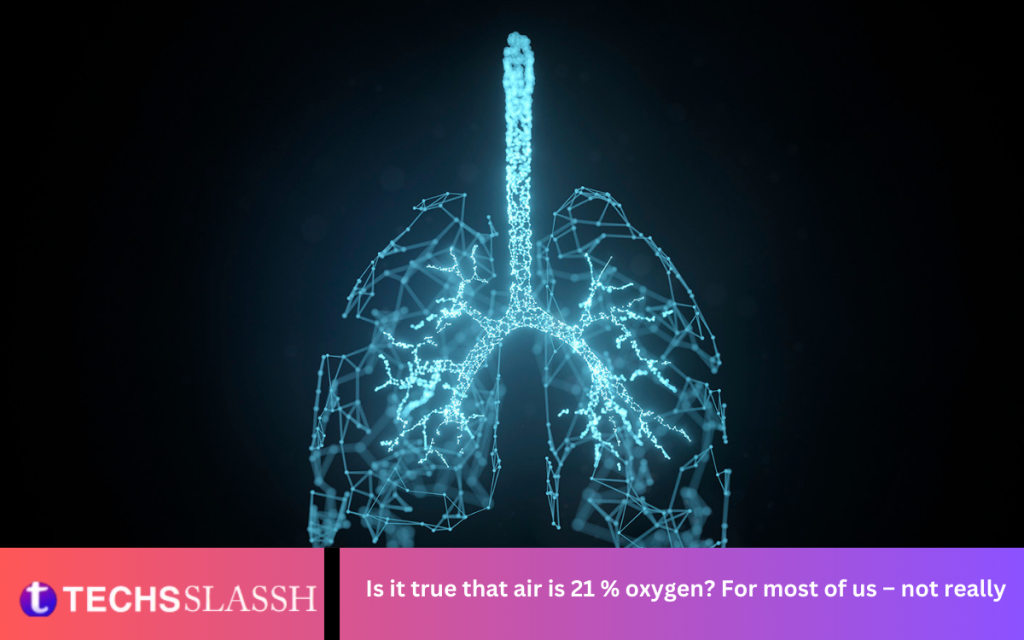Table of Contents
If You’re Looking for Is it true that air is 21 % oxygen? For most of us, This question, seemingly straightforward, delves into the fundamental understanding of atmospheric composition and its implications for life on Earth. At first glance, the assertion holds merit and is often cited in educational materials and shared knowledge. However, a deeper exploration reveals a more nuanced reality.
The Earth’s atmosphere is a complex blend of gases, each playing a vital role in sustaining life as we know it. While oxygen indeed comprises a significant portion, it’s essential to recognize the presence of other gases such as nitrogen, argon, carbon dioxide, and trace amounts of various elements. This intricate balance ensures the stability and habitability of our planet.
To comprehend the atmosphere’s composition, we must delve into its history and scientific measurement techniques. Over centuries of scientific inquiry, researchers have developed methods to analyze the air’s components accurately. Through gas chromatography and mass spectrometry, scientists have elucidated the precise concentrations of different atmospheric gases.
Surprisingly, while oxygen is crucial for respiration and combustion, it constitutes only a fraction of the Earth’s atmosphere. The commonly cited figure of 21% oxygen refers to the partial pressure of oxygen at sea level, not its volumetric concentration. In reality, oxygen makes up approximately 20.95% of the atmosphere by volume, a slight deviation from the rounded figure.
Production of oxygen on Earth
Oxygen production on Earth is a fascinating process intricately tied to the planet’s diverse ecosystems and biochemical cycles. Oxygen is generated primarily through photosynthesis, a fundamental biological process carried out mainly by plants, algae, and certain bacteria.
Photosynthesis occurs in chloroplasts, specialized organelles within plant cells, where chlorophyll pigments capture sunlight energy. In this process, carbon dioxide from the atmosphere and water from the soil are converted into glucose, a simple sugar, and oxygen gas. The released oxygen is then released into the atmosphere as a byproduct, enriching the air we breathe.
Percentage of oxygen in the air in high altitudes
The percentage of oxygen in the air remains relatively constant compared to sea level, but the partial pressure of oxygen decreases due to lower atmospheric pressure. At sea level, the oxygen concentration is approximately 20.95% by volume. As altitude increases, the atmospheric pressure decreases, causing the partial pressure of oxygen to decline accordingly. However, the percentage of oxygen in the air remains close to 20.95% due to the balanced composition of Earth’s atmosphere.
Percentage of oxygen in the air throughout history
Throughout Earth’s history, the percentage of oxygen in the atmosphere has undergone significant fluctuations, influenced by various geological, biological, and climatic processes. Geological evidence suggests that early in Earth’s history, around 2.4 billion years ago, the atmosphere contained very little oxygen, likely less than 1%. This period, known as the Great Oxygenation Event, it marked the emergence of oxygenic photosynthesis by early cyanobacteria, gradually increasing atmospheric oxygen levels.
Would it be better to have a higher oxygen percentage in the air?
While it might seem intuitive that having more oxygen in the air would support life, the reality is more nuanced. Oxygen is vital for aerobic respiration, which is how organisms generate energy to sustain life. However, excessively high levels of oxygen can also pose risks and challenges.
One potential concern with significantly higher oxygen concentrations is an increased risk of wildfires. Oxygen supports combustion; elevated oxygen levels can make fires more frequent and intense. This heightened fire risk could threaten ecosystems, property, and human safety.
Frequently Asked Questions
Is it accurate to say that our air is 21% oxygen?
While it’s a commonly cited figure, the precise percentage can vary slightly. Generally, Earth’s atmosphere is composed of approximately 20.95% oxygen by volume at sea level. However, this percentage can fluctuate due to altitude and local atmospheric conditions.
Why is oxygen content in the air essential to know?
Understanding the oxygen content in the air is crucial for various reasons. Oxygen is essential for aerobic respiration in humans and many other organisms, providing the energy needed for cellular functions. Additionally, accurate measurements of oxygen levels are vital for safety in industries like aviation, healthcare, and scuba diving.
How do scientists determine the percentage of oxygen in the air?
Scientists use various methods to measure the oxygen content in the atmosphere, including gas chromatography, electrochemical sensors, and infrared analyzers. These techniques allow for precise quantification of oxygen concentrations in different environments and under various conditions.
Does the percentage of oxygen in the air change at different altitudes?
While the percentage of oxygen remains relatively constant, The pressure of oxygen decreases as altitude increases due to lower atmospheric pressure. This decrease in pressure can affect oxygen availability for respiration, leading to challenges for individuals at high altitudes.
Significantly from the expected percentage?
Yes, deviations from the expected oxygen percentage can have significant implications. Higher oxygen concentrations can increase the risk of fire hazards, while lower concentrations may lead to hypoxia and other health concerns.
Conclusion
While it’s commonly stated that the air we breathe is 21% oxygen, the precise percentage is approximately 20.95% by volume at sea level. Despite this slight discrepancy, understanding the composition of Earth’s atmosphere is crucial for various reasons, including safety, health, and scientific accuracy.
The stability of oxygen levels in the atmosphere has profound implications for life on our planet. It supports aerobic respiration in humans and countless other organisms. Accurate oxygen content measurements are vital for aviation, healthcare, and environmental monitoring industries.
